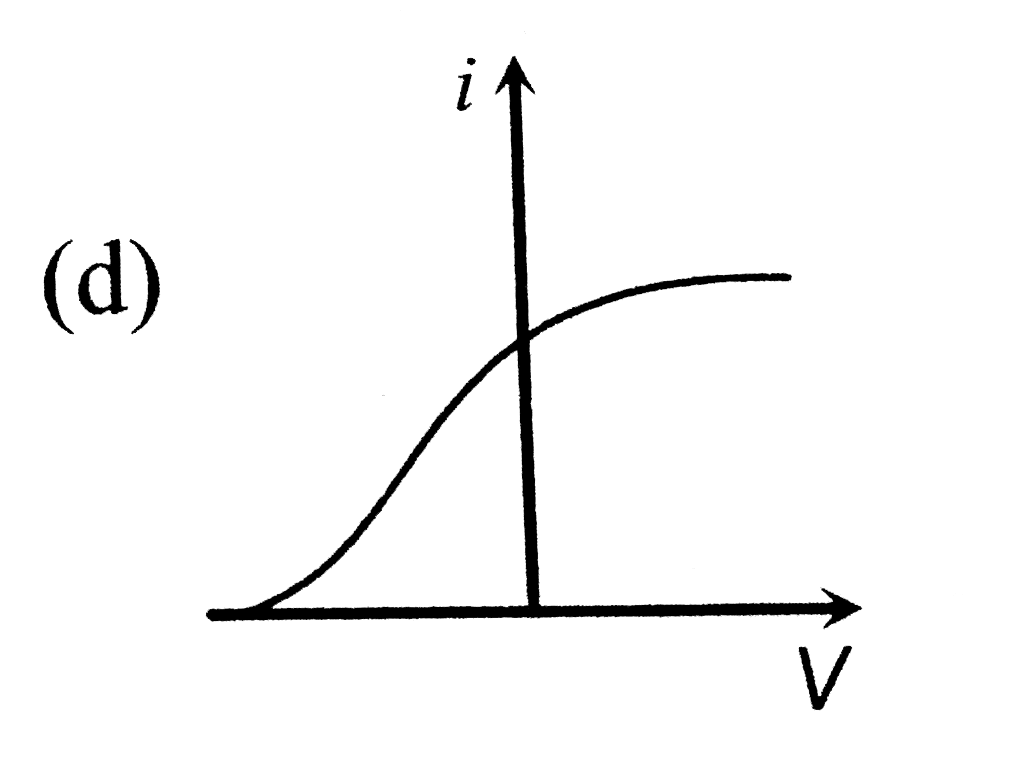The curves (a),(b),(c) and (d) show the variation between the applied potential difference (V) and the photoelectric current (i) , at two different intensities of light (I1>I2). In which figure is the correct variation shown ?




The correct Answer is:B
I1>I2 (given ) ⇒i1>i2 (∵i∝I)
and stopping potential does not depend upon intensity . So its value will be same (V0).
Topper's Solved these Questions
- DUAL NATURE OF RADIATION AND MATTERBOOK - A2ZCHAPTER - DUAL NATURE OF RADIATION AND MATTEREXERCISE - X-Rays
45 Videos
- DUAL NATURE OF RADIATION AND MATTERBOOK - A2ZCHAPTER - DUAL NATURE OF RADIATION AND MATTEREXERCISE - Problems Based On Mixed Concepts
42 Videos
- DUAL NATURE OF RADIATION AND MATTERBOOK - A2ZCHAPTER - DUAL NATURE OF RADIATION AND MATTEREXERCISE - Photo Momentum Energy
30 Videos
- CURRENT ELECTRICITYBOOK - A2ZCHAPTER - CURRENT ELECTRICITYEXERCISE - Section D - Chapter End Test
29 Videos
- ELECTRIC CHARGE, FIELD & FLUXBOOK - A2ZCHAPTER - ELECTRIC CHARGE, FIELD & FLUXEXERCISE - Section D - Chapter End Test
29 Videos
Similar Questions
From the following graph of photocurrent against collector plate potential for two different intensities of light I1andI2 one can , conclude

View SolutionPlot a graph showing the variation of photoelectric current with anode potential for two light beam of same wavelength but different intensity.
View Solution
Knowledge Check
The curve between current (i) and potential difference (V) for a photo cell will be
A B
B C
C D
D
For a metallic wire, the ratio Vi(V=applied potential difference and i= current flowing)is
Aindependent of temperatureBincreases as the temperature risesCdecreases as the temperature risesDincreases or decreases as temperature rises depending upon the metalFor a metallic wire, the ratio Vi(V=applied potential difference and i= current flowing)is
Aindependent of temperatureBincreases as the temperature risesCdecreases as the temperature risesDincreases or decreases as temperature rises depending upon the metal
For a metallic wire, the ratio Vi ( V= applied potential difference and i= current flowing ) is
View SolutionThe potential difference (VA−VB) between the point A and B as shown in the figure is

View SolutionThe relation between potential difference (V) and current (I) was discovered by:
A) Pascal
B) Tesla
C) Newton
D) Ohm
View SolutionFrom the following graph of photocurrent against collector plate potential, for two different intensities of light I1andI2 one can conclude.

View SolutionIn photoelectric effect , the curve between photoelectric current and anode potential V (for different frequencies ) is shown in figure , then

View Solution